We invited 11 winning artists from the Plein Air Salon to share their advice on the most obvious but overlooked things you should know about painting outdoors, and what “plein errors” to avoid. A great guide for beginners of plein air, you’ll want to bookmark this page so you can refer back to it — and share it with others!
Plein Air Painting for Beginners
What are the most obvious, but maybe overlooked things that new plein air painters should know?
“Consider the change of weather and light during the painting session. Also consider the size of the painting surface that can be accomplished with consideration to the variables in weather and light.” ~ Joe Gyurcsak (www.josephgyurcsak.com)
“Have protection for your body! Sunscreen, hat, bug spray, food, water, and maybe even a chair or stool to sit on.” ~Shelby Keefe (www.studioshelby.com)
“Get instruction. Use enough paint. Practice setting up before you go out for the first time.” ~Carl Bretzke (carlbretzke.com)
“Three things that I think new plein air painters overlook is taking the time to walk around and explore the area and see what may attract your attention, such as a special angle, better lighting, etc.
• Take some time to do a few quick value studies in a sketchbook. It really helps to get some idea or concept down with just three or four values and concentrating on getting some interesting arrangement of values and shapes. I think most paintings are ruined at the start, as we don’t give enough thought to the subject and design ahead of time. Don’t just copy what is in front of you . . . think about editing or adding things that might improve the painting and put some of yourself and your own ideas and feelings into your work!
• It is great to paint things like the Grand Canyon, the Tetons, the California Coast, etc., but do try some simpler subjects that will not be so overwhelming and that will build your confidence up. And try and have fun . . . don’t be afraid to fail or to succeed!” ~Ned Mueller (nedmueller.com)
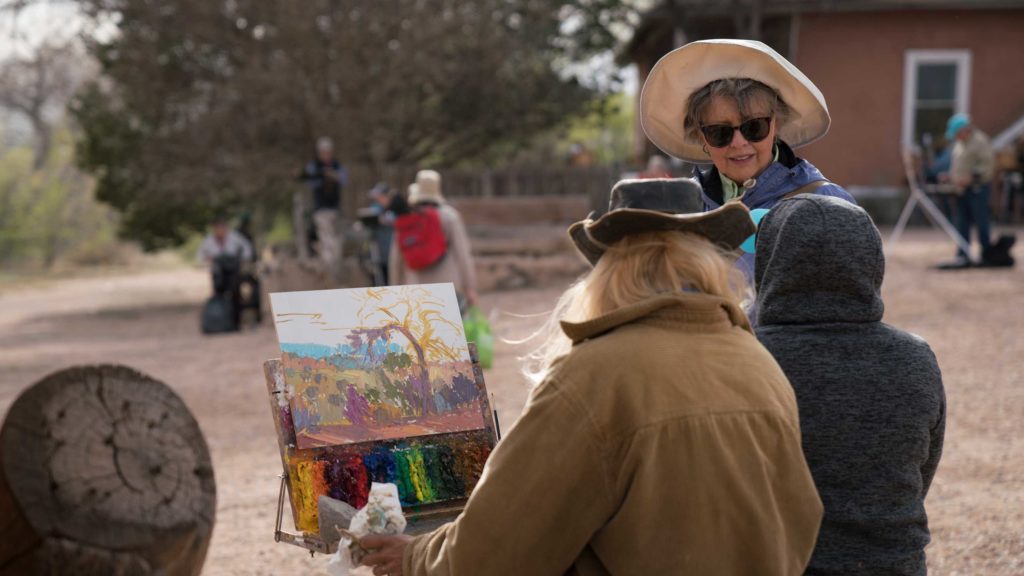
“First, painting outdoors is not easy, so obviously don’t be too hard on yourself and don’t forget that when you first decide to do this, it is forever a learning process and as long as you have a mindset that you are out here to learn, then you will have a purpose and see your failures and frustrations in a better light.
• The elements, especially the light, can change so fast. You have a window of an hour before the light usually changes, in some instances, like low-light situations such as sunsets and sunrises, the light will change every twenty seconds. Having this in mind helps you avoid doing a very complex scene that can easily end up giving one a lot of frustration.
• Be comfortable, meaning don’t stay under direct sunlight or set up in the wrong place. Set foot on a flat ground, pick the right spot, have a stool if you need to sit, and wear the right clothes. Painting is hard enough, but if you are freezing or too hot, or fatigued from standing awkwardly on a slope, you are not going to enjoy the process or be focused on what you are trying to do but instead will be thinking of how uncomfortable you are.” ~ Eleinne Basa (www.eleinnebasafineart.com)
“Keep the sun off your paper. The glare makes it impossible to judge colors/values.
Use sunscreen, and then carefully wipe off the front of your hands because touching watercolor paper with sunscreen leaves oil resist marks that will not accept paint. Get up and walk away from your painting periodically, as this helps get your blood flowing, helps you think better, and you can more easily judge value and composition as you walk back to the easel.” ~ Robin Purcell (RobinPurcellPaints.blogspot.com)
[Join the Plein Air Today community of artists when you sign up for our free weekly newsletter.]
“Start small, especially in the beginning. You’ll learn about zooming in on one specific part of your surroundings if you create small sketches, even if you do ultimately end up painting some larger work outside as well. Creating small sketches will also help you avoid the dual temptations of trying to paint the entire vista around you and feeling the need to have a completed, studio-like painting at the end of a session.
• The light on your painting and palette really matter. If you paint with your panel in direct sunlight, you may compensate for it and wind up with something much darker and grayer than you intend. Conversely, if you paint in deep shade or at twilight, you might end up with an overly high-key painting. You can keep your values in check by trying to find a shady spot with consistent light, using an umbrella by day or an easel light by night, and even having a grayscale value chart on hand to hold up to your painting.
• Squint to simplify what you’re seeing into shapes — your eye will delineate objects in the landscape (trees, roads, fences, fields) and categorize them, but the beauty of painting from life is that you can create a greater sense of reality by squinting and looking for shapes to create the form of your landscape. Keep edges soft and fight the urge to paint each object in the landscape separately.” ~ Kathleen Hudson (www.kathleenbhudson.com)
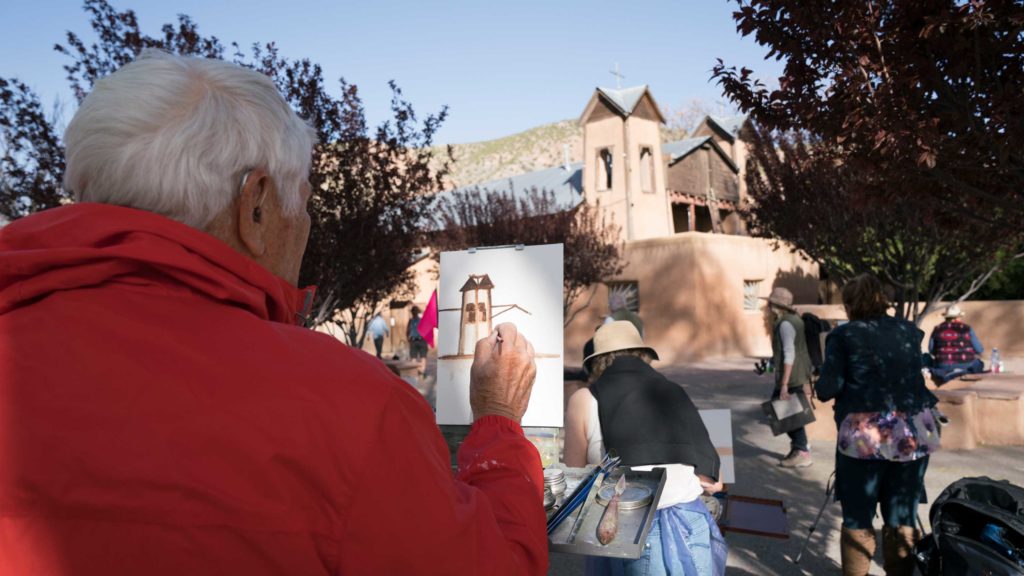
“Paint your favorite subject and follow your intuition. Pick a simple subject to paint when you’re painting plein air (don’t get overwhelmed). Noonday light is best for new painters because the light doesn’t change as much.” ~ Michael Situ (www.michaelsitu.com)
“Expect to be uncomfortable at least once during the painting. Focus on the part of the scene that inspired you to paint it. Don’t set up with direct sunlight on your canvas.” ~ Dave Santillanes (dasanti.com)
“Here are three of the most obvious things that a new plein air painter should know (and it took me awhile to realize these):
• Hold your brush differently than for studio work, with your hand loosely gripped at the far end of a long-handled brush. Good plein air work requires using the whole arm, not the hand.
• Find the large shapes quickly in what you are painting. Block in the shapes with three basic contrasts (dark, light, medium) and don’t do any details until the end.
• Colors aren’t as important as values. If the values are right, you only need a limited palette and the painting will look more cohesive using three to five colors and white and creating your secondary colors with your three basics than using 20 pre-mixed colors out of the tube.” ~ Marilyn Wear (marilynwear.com)
Have you experienced any “plein errors”?
“Too much paint on the surface too early on is no good!” ~Joe Gyurcsak
“My loaded palette flipped out and onto a family’s bricked driveway during an event. I spent the next hour cleaning bricks.” ~ Carl Bretzke
“I’ve made many plein air errors, but doing small value studies helps to cut down on the number of clunkers we all end up doing. Being dressed properly and being prepared for whatever weather conditions come along is important because it’s hard to do a good painting if you are miserable!
Painting in the wilderness can have its hazards, so be aware of areas where grizzly bears and such may hangout. I do have a favorite grizzly encounter that people love to hear!” ~ Ned Mueller
“Because I paint organic shapes, halfway into a painting I have backed up and seen a variety of inadvertent animals, including a swimming sea turtle and a cat’s profile. Once seen, they can’t be unseen!” ~ Robin Purcell
“I’ve never had a consequential easel blow-over, but I fell pretty spectacularly once when a large tour group came to see what I was doing (I backed up, forgetting about a boulder behind me). And then there was the time an angry squirrel urinated on me, my painting, and easel when I was painting in a state park in Florida.” ~ Kathleen Hudson
“After snowshoeing to a painting location, I decided to leave the snowshoes on while I painted and quickly forgot about them. Of course when I tried to step back to view my work the tails dug in and I ended up on my back viewing the sky.” ~ Dave Santillanes
“Holding my brush wrong for so many years.” ~ Marilyn Wear
“There was the time a farm dog came over and peed on my open palette that was sitting on the ground when I was painting at Ratto Ranch conservancy. Or the time I swallowed several lady bugs when I opened my mouth to speak. It was ladybug hatching season in the Sierras and they were swarming on the South Fork of the Stanislaus river in spring. I believe I still have several remnants of the ladybugs on my canvas I painted that day.” ~ Susan Kendall (susankendallart.com)
“Setting up in front of an active and lively pub to paint a nocturne is probably not a good idea if you don’t enjoy quirky people with goofy questions. If you are a patient painter who doesn’t mind the scene, it can be entertaining. But as the night progresses, the distractions become a little more annoying and YOU become the entertainment! On one occasion I’ve even been tipped as if I were a street performer, which, I guess I was! On the plus side, a patron may come out and bring you a drink.” ~ Shelby Keefe
Plein Air Paintings for Your Inspiration:
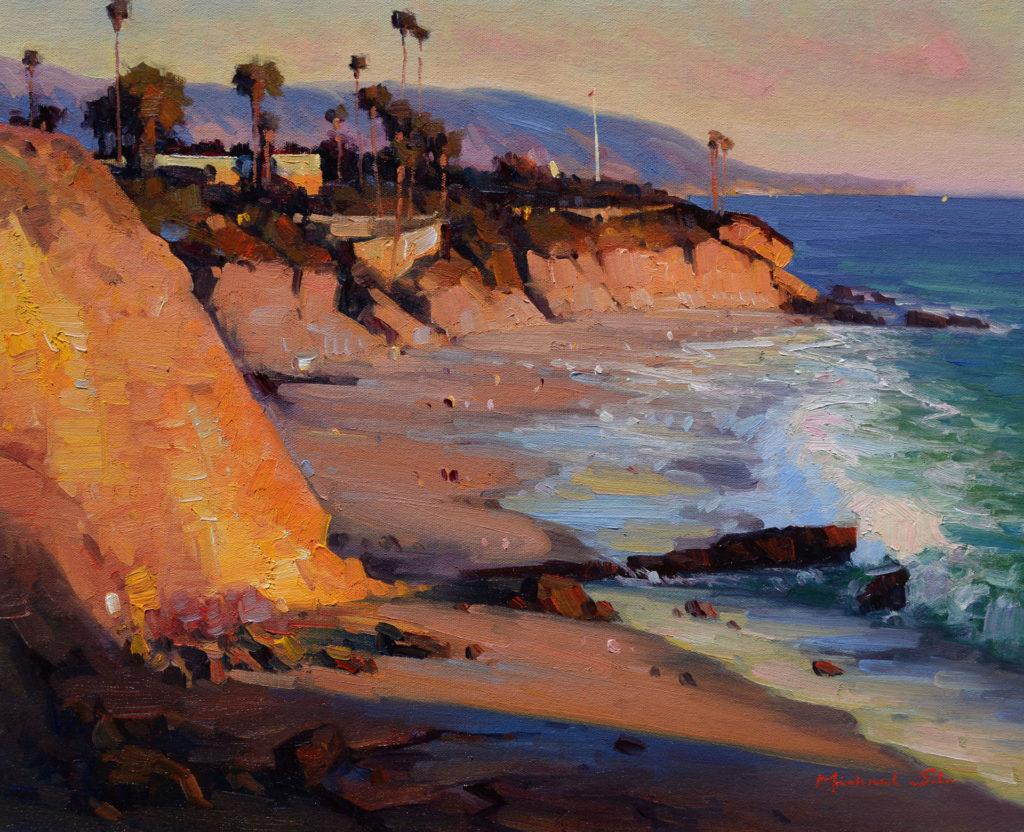
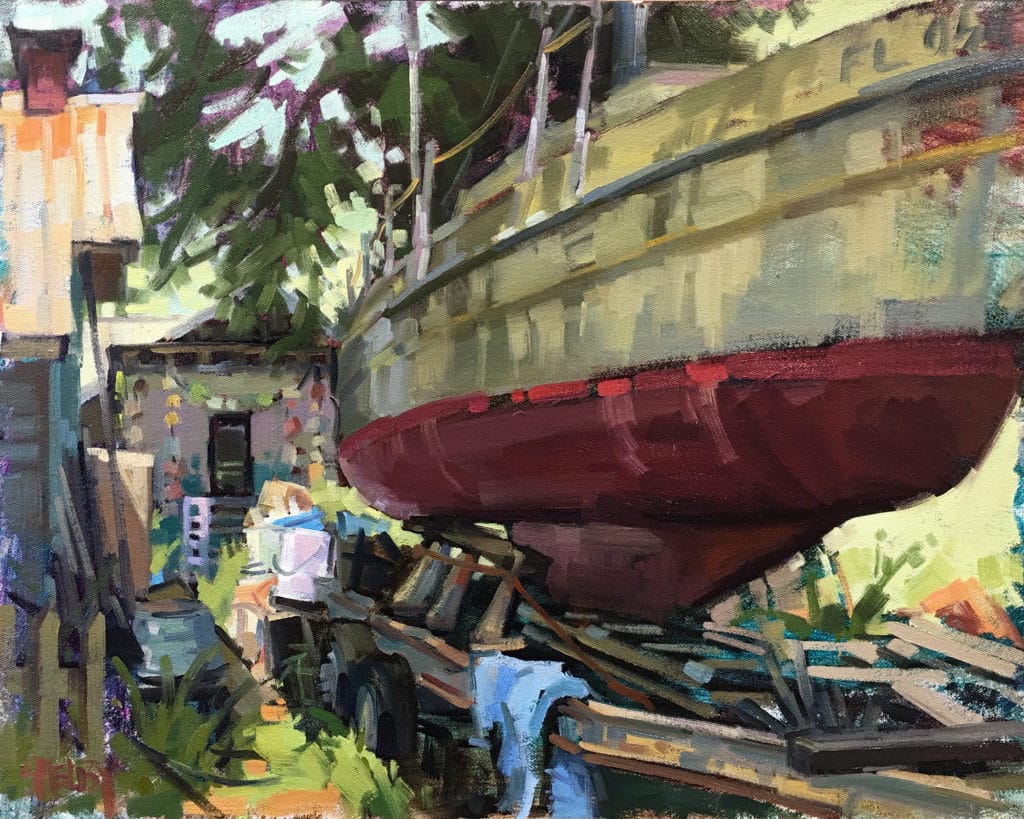
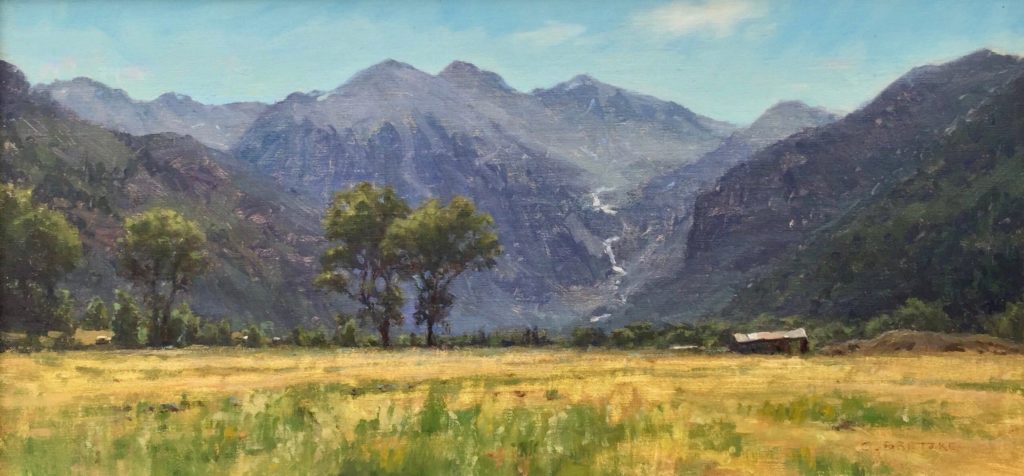
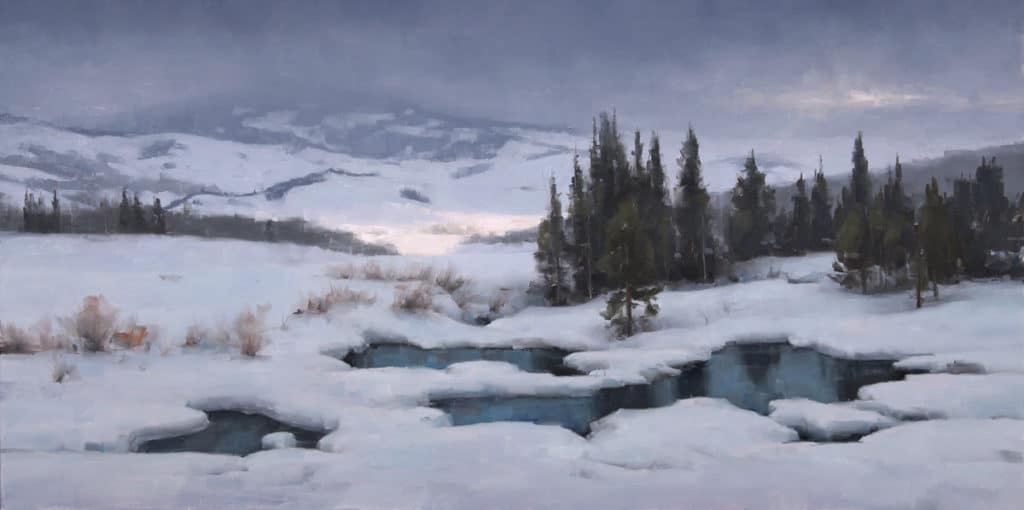
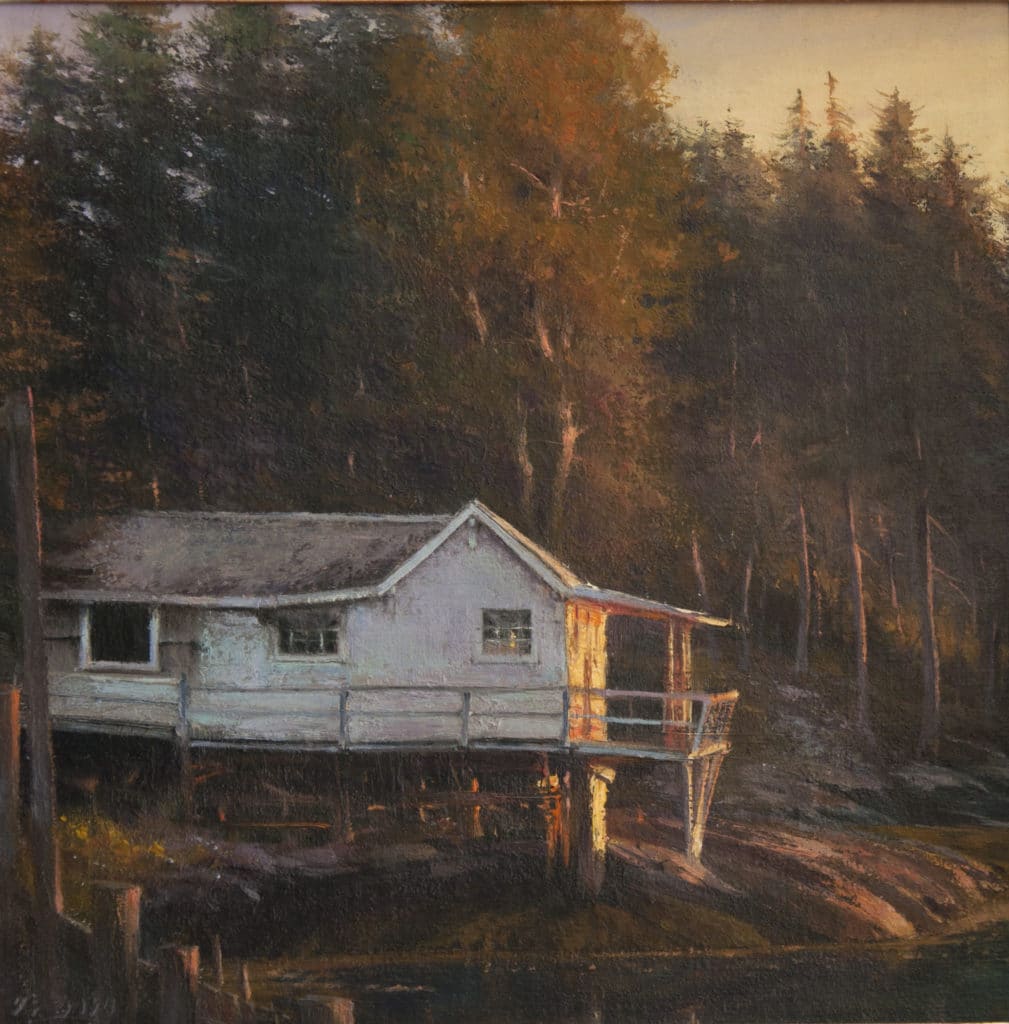
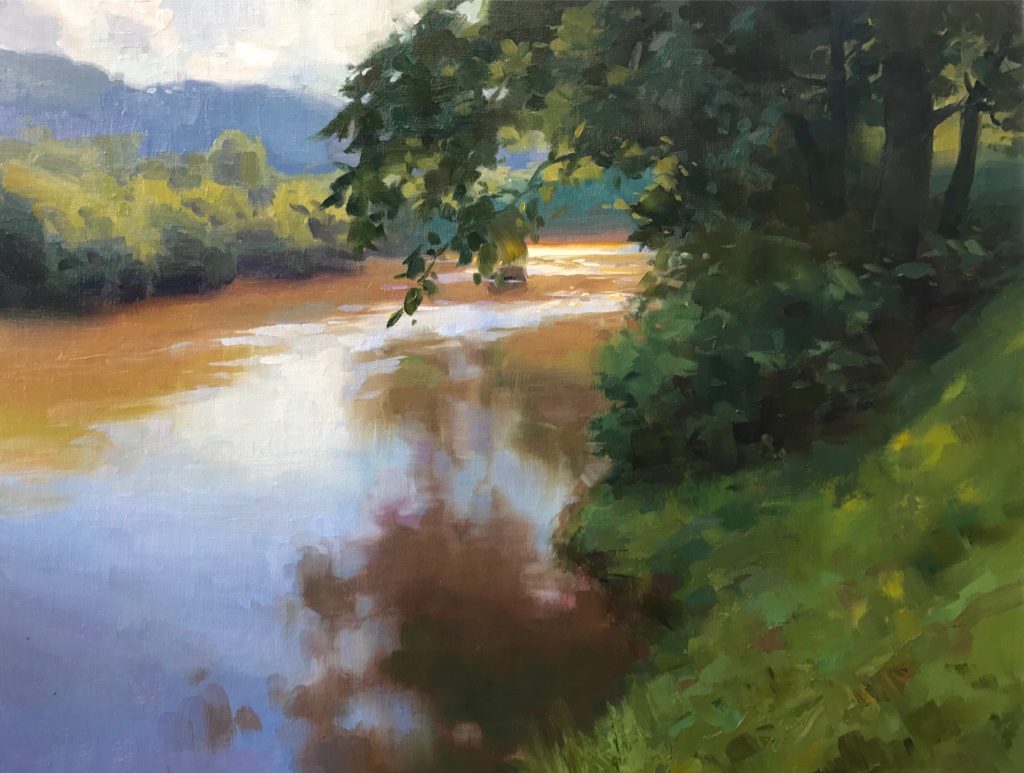
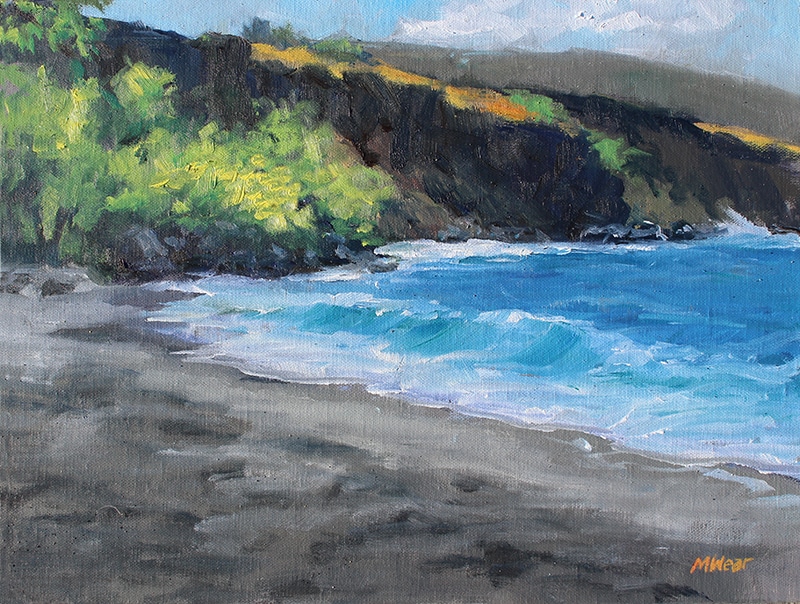
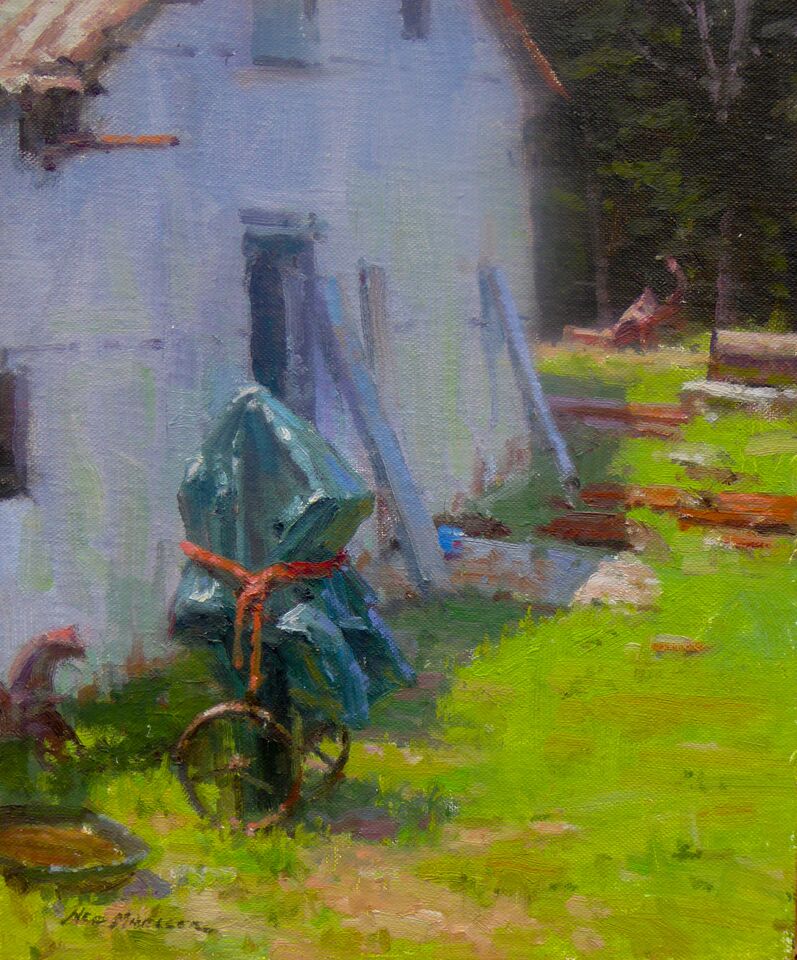
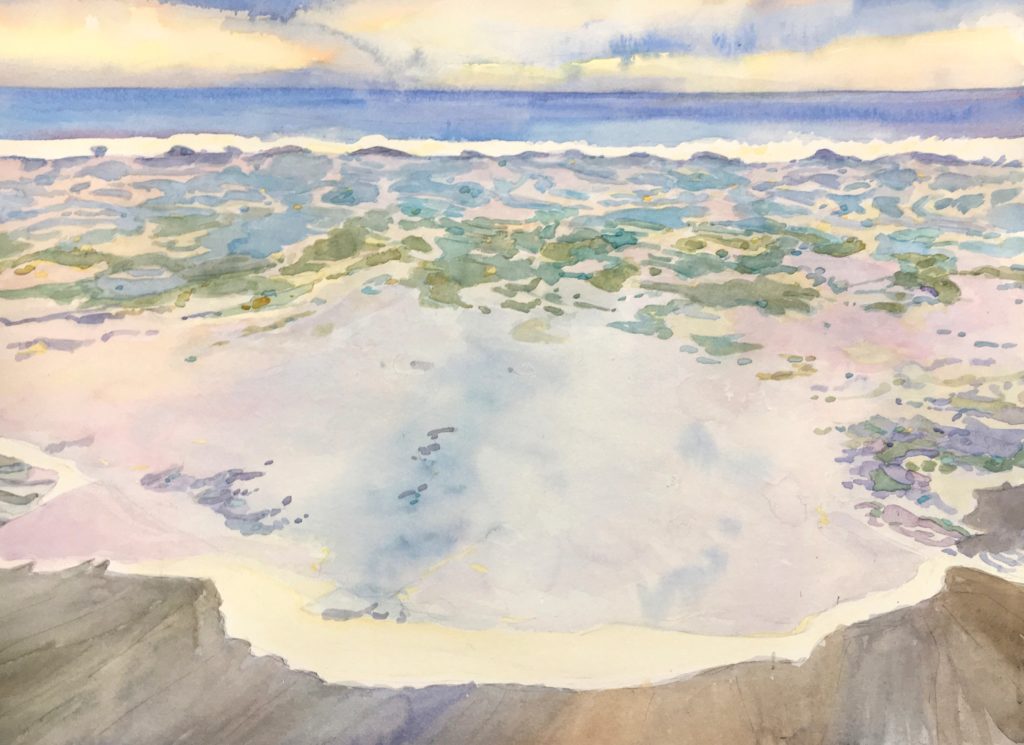
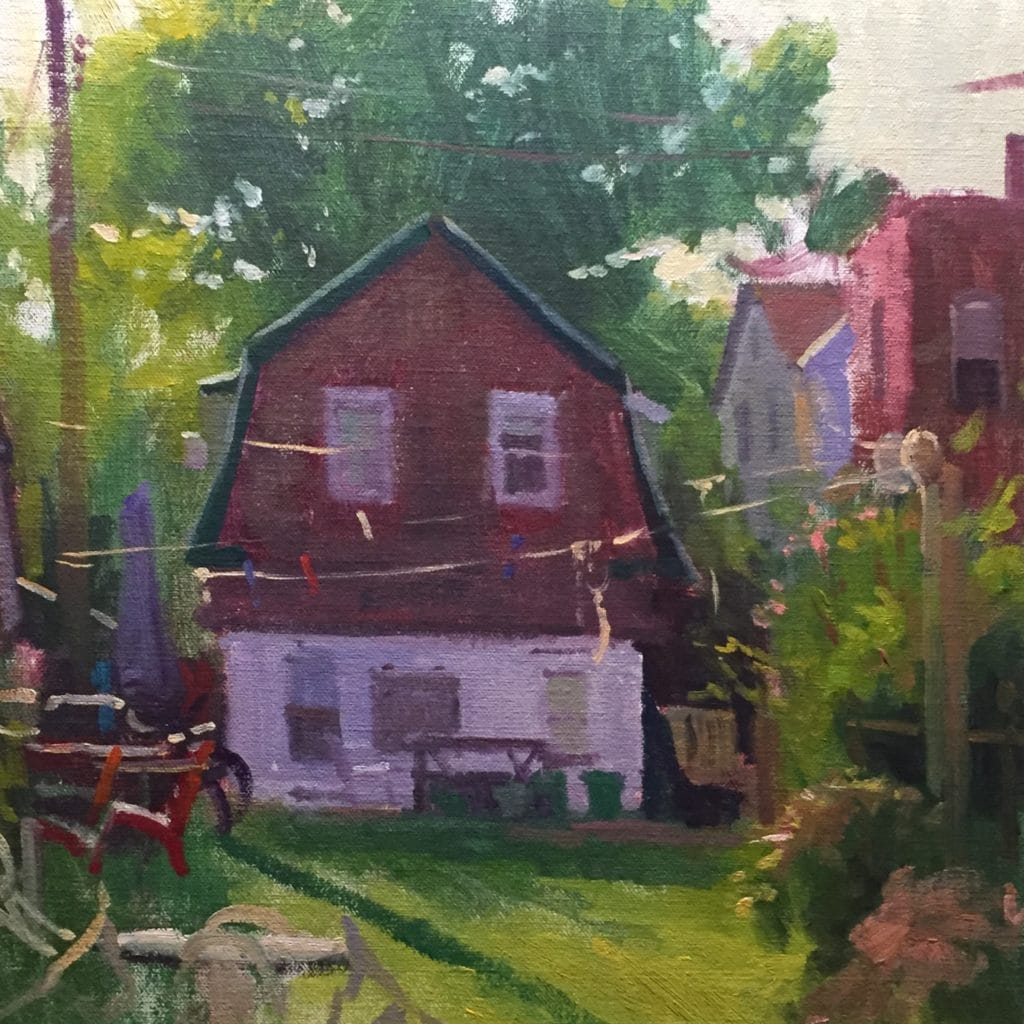
Upcoming travel and art events with Streamline Publishing:
- June 8-15, 2019: Publisher’s Invitational: Paint Adirondacks
- September 22-29, 2019: Fall Color Week: Ghost Ranch
- October 11-19, 2019: Fine Art Connoisseur Art Trip to France
- November 10-13, 2019: Figurative Art Convention & Expo
- May 2-6, 2020: The 9th Annual Plein Air Convention & Expo
Like this? Click here to subscribe to PleinAir Today,
from the publishers of PleinAir Magazine.

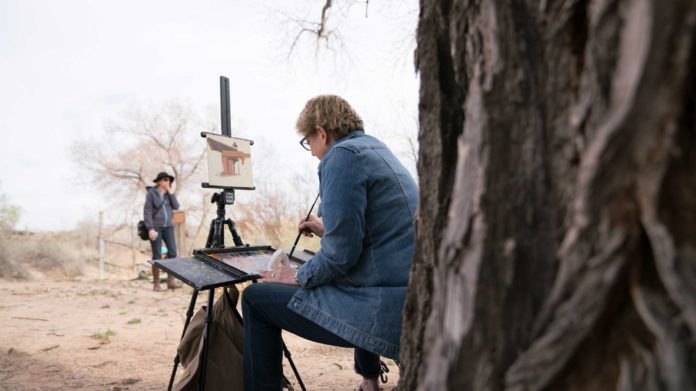
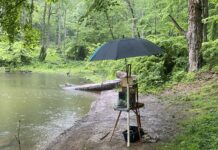


Dummy??!!! Did you really want someone wants to read your article?? I refuse!
Hi! Sorry if you were offended by the title! It’s just a play on words, meant to give the topic a light-hearted feel. Of course we would never think or call someone a dummy in seriousness – we were all beginners at something, some time! 🙂
I agree. It is offensive and overused.
I liked all the tips in here! Now to actually get out there and do some value studies…
I love the title! After many years in the studio, I’m venturing outside to paint more. Yes, things happen outside that are so unexpected. I loved reading comments from seasoned plein air artists.
All the paintings here are fantastic but “light on the little river” really turns me on.
Jumped on this article because I’m a Baby Plein Air Painter (as Eric Rhoads likes to call us) busy soaking up the info before I venture out. Good pointers here… and I agree with Jim Demello, Kathleen Hudson’s “Light on the Little River” grabbed me.
Good information for beginners. Thanks